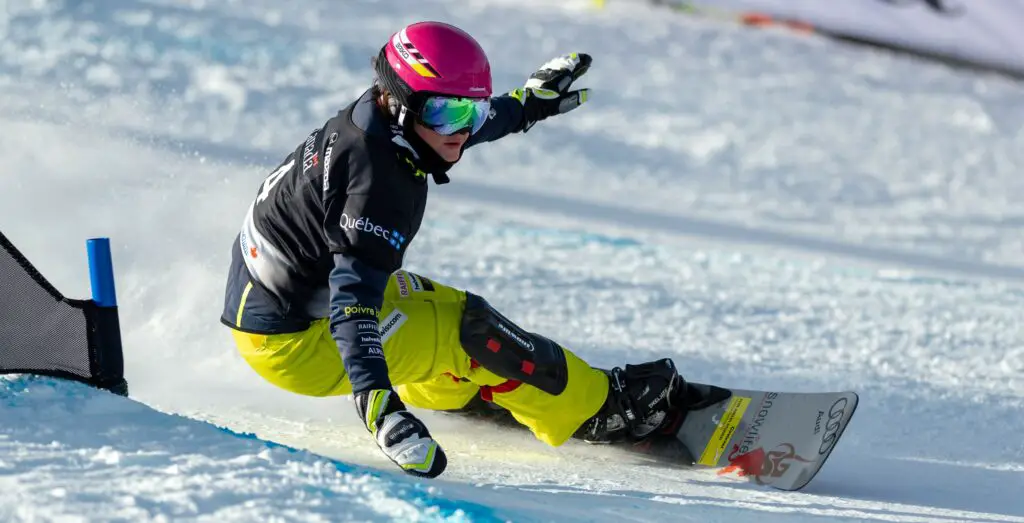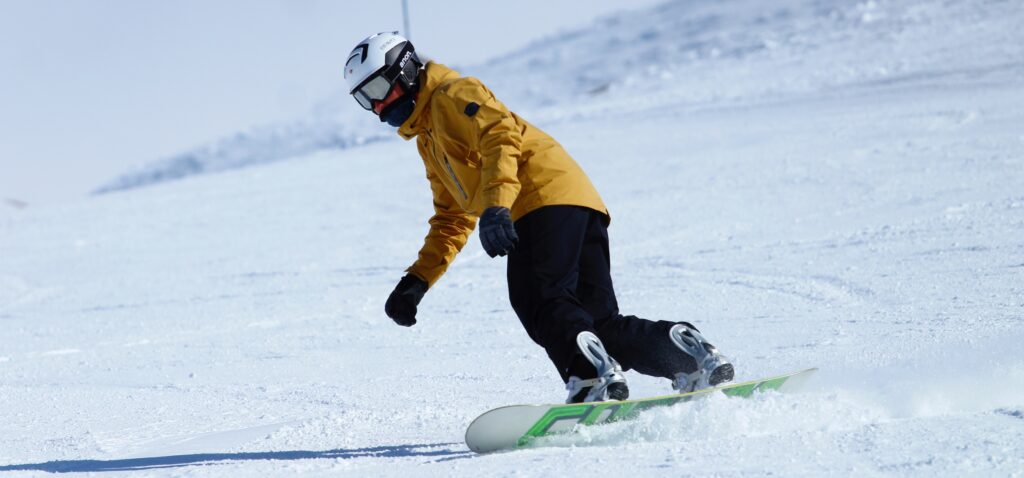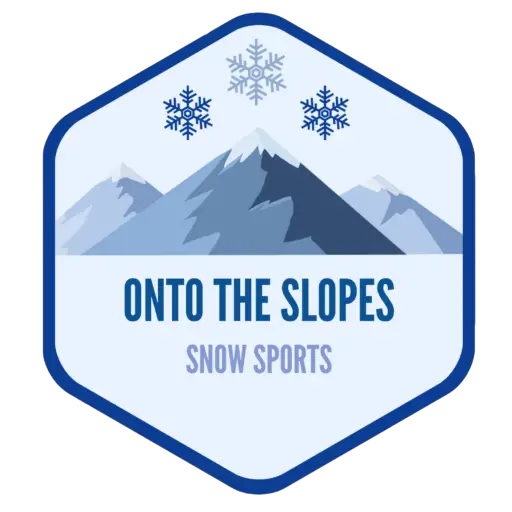The vast majority of ski resorts across the world allow both skiers and snowboarders on their mountains, but there are a select few which are “ski-only” and snowboarding is not allowed in the resort. But which resorts have banned snowboarders, and what are the reasons?
Which Ski Resorts Have Banned Snowboarding?
The three ski resorts in North America which are “ski-only” and snowboarding is not allowed are:
- Alta (Utah)
- Deer Valley (Utah)
- Mad River Glen (Vermont)

Alta
Alta ski area is located in Utah and is well known for its excellent powder, and the fact that it is “ski-only” and does not allow snowboarding. It has 2614 acres of skiable terrain which is mainly suitable for advanced skiers.
A lawsuit was filed by Wasatch Equality claiming that the ban on snowboarding violated the 14th amendment in 2014. This was overruled and it was ruled that banning snowboarding did not violate the 14th amendment. The decision was appealed unsuccessfully.
If you are in this area and want to go snowboarding, then you can visit the partner resort, Snowbird. This resort has 2500 acres of terrain and has a pretty even split of beginner, intermediate and advanced runs open to both skiers and snowboarders.
Check out this comparison of Alta and Snowbird if you want to learn more.
Deer Valley
Deer Valley is also located in Utah and like Alta, does not allow snowboarding. It offers 2026 acres of ski-only terrain with the focus being on intermediate runs. Again, like its neighbour Alta, the resort is very strict about being ski-only.
Deer Valley has a very upscale vibe and is one of the most expensive ski resorts in North America. Some skiers prefer to pay the premium to ski at Deer Valley to avoid snowboarders.
The closest resort to Deer Valley which allows snowboarders is Park City which has 7300 acres of terrain and 7 terrain parks making it an excellent option.
Check out this comparison of Deer Valley and Park City if you want to learn more.
Mad River Glen
Another North American resort which does not allow snowboarding is Mad River Glen located in Fayston, Vermont. It is a small resort with only 700 acres of skiable terrain but unlike the only other two ski-only resorts (Alta and Deer Valley), Mad River Glen has terrain parks.
Unlike Alta and Deer Valley, Mad River Glen actually did allow snowboarding up until the 1991-1992 ski season.
According to the madriverglen.com website, the owner in 1986 ran into safety issues on the main lift (a 1948 single chair) after which, snowboarders were not allowed on that particular lift. This lead to confrontation with snowboarders leading to the full restriction.
The Co-op took over the mountain in 1995 and voted again on the decision to ban snowboarding and 75% agreed to keep it on place. There hasn’t been another vote since but according to the Co-op’s by-laws, the only way for the policy to change is if more than 2/3 of the shareholders vote to change it.
You can see madriverglen.com/snowboard-policy for more information.
The closest resorts in Vermont which does allow snowboarders is Sugarbush which has 484 acres of skiable terrain.

Why Have Some Resorts Banned Snowboarding?
The main reason why Alta, Deer Valley and Mad River Glen ski resorts do not allow snowboarding is because they argue that skiers feel safer and find it more peaceful when there are no snowboarders on the slopes. It is often stated that it is not due to prejudice against snowboarders.
There are four main arguments for banning snowboarding:
- Increasing safety
- Improved snow quality
- Tradition and culture
- Terrain unsuitability for snowboarding
Safety Reasons
The main argument for having a snowboarding ban is to make the resort safer.
One reason why allowing snowboarding is considered less safe is because some people think that snowboarders have a blind spot due to their sideways stance, however this is often disregarded by snowboarders who claim that it does not hinder the awareness of their surroundings.
Snowboarders, often unfairly, have a reputation for being more reckless and inconsiderate on the slopes which can bother some skiers. However, it is also true that skiers can be dangerous and it often is down to a lack of experience and riders attempting trails that they are not ready for.
Snow Quality
A common argument used to justify ski-only resorts is that snowboarders ruin the snow quality. However, there’s a lot of debate surrounding this.
The idea is that snowboarders cut up the powder more since their riding on a larger surface area. However, if you are going to a decent resort with a good amount of snow then this really shouldn’t be an issue.
Skiing also will decrease the quality of the snow throughout the day and the quality has a lot to do with the weather and the general amount of traffic as opposed to the ratio of skiers and snowboarders.
Tradition and Culture
Some snowboarders claim that the ski-only resorts remain stubborn in their decision due to only elitist traditions. Skiing has been around for a lot longer than snowboarding which emerged in the 1980s. Some argue that the refusal to allow snowboarders is simply due to old-fashioned thinking that only skiing should be done on the slopes.
There’s much debate as to how much clout this “reason” has, and it often stirs up antagonism in the community and the resorts do not use it as a way to defend their decision. It is however, a reason why some skiers choose to go to one of the ski-only resorts.
Terrain
Another reason why some resorts only allow skiers is because some of the mountain is only accessible by traversing which is difficult for snowboarders to do. This is an argument often used for Alta remaining ski-only, as it has some very steep areas.
If snowboarding were to be allowed at Alta, they would probably feel the need to change the layout of the ski area to make it easier to snowboard, which could upset their ski-only fanbase.
Have Any Resorts Reversed the Decision?
Taos Ski Valley was a ski-only resort up until March 19th 2008 when it changed its policy to allow snowboarding as well as skiing. The “Free Taos” movement started in the mid 90s campaigning to allow snowboarding at the resort but it took over a decade before it was successful. The decision was well received with the resort still being popular amongst skiers.
After this decision, Alta, Deer Valley and Mad River Glen remained the only 3 ski-only areas in North America.
There has been a lot of pressure for these resorts to allow snowboarders but it hasn’t led to any changes. Aside from the Wasatch Equality lawsuit against Alta, Jake Burton announced a “Poach the Line” contest in 2007 which offered $5000 for the best video of snowboarders riding at the ski-only resorts.

Which Ski Resorts Allow Snowboarding?
All resorts allow snowboarders in North America except for Alta and Deer Valley in Utah, and Mad River Glen in Vermont. There are no major ski resorts in Canada, Australia, New Zealand or Europe which have explicitly banned snowboarders.
If you are looking for a place to go snowboarding in Utah or Vermont, here are a list of options.
Resorts which allow snowboarding in Utah:
- Park City
- Snowbird
- Snowbasin
- Powder Mountain
- Sundance
- Solitude
- Brighton
- Brian Head
Resorts which allow snowboarding in Vermont:
- Sugarbush
- Smuggler’s Notch
- Stowe
- Killington
- Okemo
- Stratton
- Jay Peak
- Mount Snow
Does Vail allow snowboarders?
Vail ski resort does allow snowboarding and is not a “ski-only” resort.
The confusion around this dates back to 2019 when Vail Resorts CEO Robert Katz made an April Fool’s joke announcing it was planning to ban snowboarding across all Vail Resorts owned-locations (including Whistler, Beaver Creek, Park City, Breckenridge, Keystone and Perisher).
Fortunately for snowboarders, they were soon relieved when it was revealed that this was a practical joke and all the resorts were continuing to allow both skiers and snowboarders.

